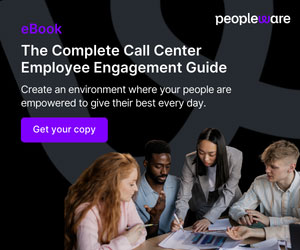According to Deloitte’s 2015 research into Global Human Capital Trends, the top priority for business leaders around the world right now is culture and engagement. They go on to say that ‘organisations are recognising the need to focus on culture and dramatically improve employee engagement’.
Additional research by the Great Place To Work Institute into the ROI of investments in workplace culture shows that creating a ‘great place to work’ delivers better business results, attracts the best talent and lowers staff turnover rates.
However, creating a great place to work isn’t just about providing free food or a ping-pong table or a funky office environment or the benefits that employees get. These things can help, but mostly it’s about how ‘engaged’ employees feel with their work.
As a result, it’s concerning to then see recent data from Gallup that shows that, according to their research, there has been very little improvement in employee engagement levels over the last year.
So, if executives and leaders rate culture and engagement as their top priority, and they understand its benefits, then what is going on?
Improving employee engagement is not a new organisational issue. It’s been around for some time now. So, why are the majority of efforts to improve employee engagement failing to have a big impact?
Additional insights from Gallup may offer a bit of a clue as to what might be going on, where their recent research also highlighted that “Large organizations tend to have lower employee engagement levels than small businesses.”
Now, apart from having more people and dealing with more complexity, in my experience, the biggest difference between small and larger organisations is that larger organisations tend to measure and ‘manage’ the performance of more things, more closely, including their employees.
Therefore, it seems legitimate to ask if the way that larger organisations manage their people and/or manage the performance of their people could be holding back their engagement efforts. Right?
This situation was highlighted in a piece that my friend, James Lawther, wrote recently which contained a couple of stories about management styles and managing performance.
In James’ piece, he told a story that he had recently been told by a rugby player that he had met. In the story, the rugby player explained that when his team won, their coach would conduct an in-depth analysis of the game, with the team, in the changing (locker) room immediately after the match.
In this session he would concentrate on what went well during the game, what had worked as well, as well as highlighting and praising good performances. Finally, at the end of the session, he emphasised what they should do and what they should focus on in their next match if they were to make sure that their next game went as well as the one they had just won.
In addition to James’ story, a reader shared a different, but linked, story in the comments section and one that featured Brian Clough, the legendary Nottingham Forest football manager. Now, Clough took over at Nottingham Forest in 1976 and set about transforming them from a regular Division Two team, to Division Two title winners in 1977, Division One title winners in 1978 and back to back European champions in 1979 and 1980.
However, it is what he is said to have done when the team suffered a loss that is interesting. On the way back from losing a match, he is said to have routinely stopped the team coach somewhere on the way back home and to have told the players to go and have a beer, get the loss out of their system and then move on from it.
These types of approaches are quite common in sport and are great ways of engaging players, helping them focus on the right things that will drive performance.
However, I’m not sure that we can say the same about business, especially large businesses.
As James points out in his post, there’s a high likelihood that many supervisors, managers and leaders in large organisations will instigate lengthy investigations into the what, the why, the who and the how etc when something goes wrong.
However, when things go wrong, employees and team members generally know and understand what has gone wrong, and belabouring the point may not be that helpful or help nurture engagement. In fact, it may have the opposite effect as, according to Engage For Success, engaged employees want to be treated as individuals and seen not as the problem but rather as part of the solution. They also want to succeed, grow and improve.
So, whilst it’s important to learn the lessons from when things go wrong, there is a danger that focusing too heavily on what went wrong rather than on what went right is creating a culture within large organisations that focuses on minimising mistakes and not losing rather than focusing on performance improvement and winning. As a result, it is likely that this, in turn, could be having a negative impact on employee engagement efforts.
So, ask yourself: What do you do when things go wrong? And, what do you do when things go right? Could your approach be undermining your other engagement efforts?
Author: Guest Author
Published On: 16th Feb 2016 - Last modified: 30th Nov 2023
Read more about - Archived Content, James Lawther


























